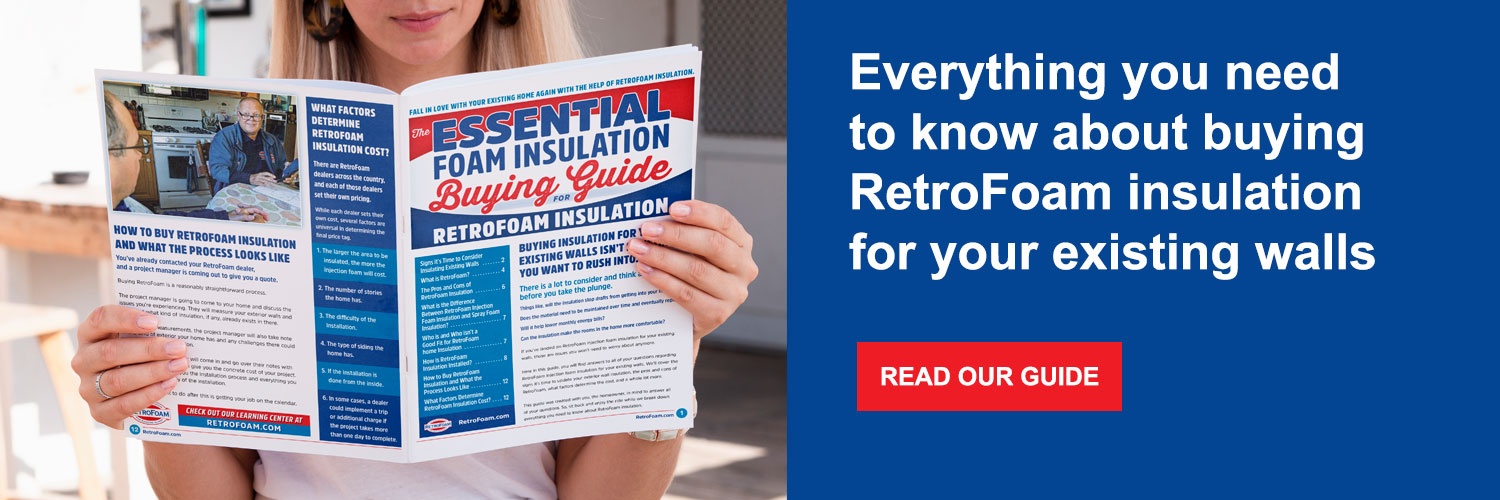What Does Fire Rating Mean for Wall Insulation?


Adding insulation to your existing walls can make your home energy efficient, but those savings won’t mean as much if the material is flammable.
If the worst were to happen and there was a fire in your home, you don’t want something in your walls that will serve as a catalyst. More specifically, you don’t want your wall insulation to be the reason the fire spreads throughout your home.
So, how do you know which insulation materials are best to use in your home when it comes to fire safety and is insulation flammable?
It all comes down to the insulation’s fire rating.
RetroFoam has been installing injection foam insulation in the existing walls of homes for more than 35 years. RetroFoam insulation has been tested and is Class 1 Fire Rated.
This article will explain what a Class A Fire Rating, also known as a Class 1 Fire Rating, is and what that means for your home.
What is Fire Rating for Insulation?
Fire rating for insulation is a system used to determine how long the material can withstand a standard fire resistance test.
So, what does Class 1 Fire Rating mean?
The definition of a Class 1 Fire Rating is the flame spread index and smoke development index, which really means how fast the flame spreads when introduced to the insulation material and how much smoke it produces.
The Class A or Class 1 Fire Rating is the best an insulation material can receive. There are obviously lower ratings that have a lower fire resistance.
This testing standard is universal for any insulation that is installed in a home.
Some foam insulation materials on the market are inherently at that Class 1 Fire Rating, so by itself, in some cases, it meets the required standards. Traditional insulation, like cellulose and fiberglass, has additives mixed in to help reach that mark.
Fire Rating for Insulation Requirements
When it comes to the fire code, specific materials, like foam insulation, have requirements they have to meet.
The fire code states that because foam insulation is a plastic, it has to be separated from the living space.
That separation from the living space is essentially your drywall. This separation only applies to areas of your home where you actively live, so not the attic or crawl space.
This separation is required because there are foam insulation products on the market that are flammable, while there are others, like RetroFoam injection foam insulation, that doesn’t act as a catalyst. There are even some foam materials that are fire-retardant.
These older foam insulation products are why the code calls for plastics to be separated from the living space. While it was the case that previous versions of foam insulation could be flammable, most materials have evolved since then.
It gets trickier when you are talking about traditional insulation materials like fiberglass and cellulose. These materials don’t have the same requirements as foam because they aren’t plastic.
Cellulose is made of flammable materials like newspaper and denim, but there are chemicals added to it that make some of the products unable to ignite at all.
When fiberglass is tested, only the material itself is tested. What’s not included in that testing is the craft paper found on the back of fiberglass batts. If there were a fire in your home, the fiberglass would melt, creating a heat source. That heat can cause the craft paper backing to ignite.
Choosing Insulation with a Class 1 Fire Rating for Your Walls
RetroFoam insulation is Class 1 Fire Rated and doesn’t serve as a catalyst in your walls if there were a fire.
As a matter of fact, when the flame is removed from the RetroFoam, the material self-extinguishes.
If you want to learn more about RetroFoam and everything it has to offer, check out the Learning Center on our website.
Related Articles
Is RetroFoam Safe to Have in Your Home?
Clearing Up Misconception About Injection Foam Insulation
What is the Difference Between RetroFoam Injection Foam and Spray Foam Insulation?
About Amanda Emery
Amanda previously has worked as a breaking news and crime reporter, TV news producer, and editor. As a journalist, she has won several awards from The Society of Professional Journalists - Detroit Chapter and the Michigan Press Association. Amanda uses her experience as a journalist to write content that will help educate homeowners on foam insulation benefits. When Amanda isn’t writing, she’s spending time with her husband Chris, daughter Lilith-Maeve, and rescued huskies Danger and Wendigo. She also loves knitting, making art, and cooking.


